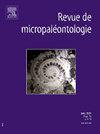FORAM指数(FI)作为中国香港珊瑚生态系统环境扰动的指标
IF 1
Q4 PALEONTOLOGY
引用次数: 0
摘要
中国香港的海事、工业、城市扩张和旅游活动一直在增加。这些通过河流和运河网络产生的富含营养的污水、工业废水和地表径流影响了边缘珊瑚生态系统。FORAM指数(FI)是一个单一的度量指数,通过结合异养、机会性和共生体分类群在特定关系中的丰度比率来评估珊瑚礁环境的健康状况。调查了香港的四个地区——西贡东北部、西贡东部、大屿山和香港南部。共鉴定出61属生境特有底栖有孔虫。各试验站均有丰富的耐应力异养菌。在东西贡及东北西贡地区的少数地点,有大量的共生类群,以与珊瑚有相似生态系统功能的两栖纲动物为主。所有样点均有机会性类群,以Elphidium和氨气为代表。东西贡地区有两个监测站的指数为FI<; 4,表示环境可以支持珊瑚的活力,而其余监测站则处于中间水平(2≤FI< 4)。在西贡东北部,只有两个监测站有FI <; 2。而剩下的三个站是中间的。所有大屿山监测站的指数均低于FI = 2,无法支持珊瑚恢复。大部份南港样本站的指数低于FI = 2。调查显示,所有地点均处于不同的受影响阶段,大部分地点可能不适合珊瑚恢复和生长。因此,需要持续的评估和监测,以保持生态系统的功能。本文章由计算机程序翻译,如有差异,请以英文原文为准。
The FORAM Index (FI) as an indicator of environmental perturbations in coral ecosystems of Hong Kong, China
Maritime, industrial, urban expansion, and touristic activities have been on the rise in Hong Kong, China. These impact the fringing coral ecosystems with nutrient-rich sewages, industrial effluents and surface run-offs through network of rivers and canals. The FORAM Index (FI), is a single metric index that evaluates the health status of reef environments by combining the abundance ratios of the heterotrophic, opportunistic, and symbiont-bearing taxa in a specialized relationship. Four regions of Hong Kong were investigated— Northeastern Sai Kung, East Sai Kung, Lantau and Southern Hong Kong. A total of 61 genera of habitat specific benthic foraminifera were identified. The stress-tolerant heterotrophs were abundant at all stations. The symbiont-bearing taxa, dominated by Amphistegina which share similar ecosystem functions with the corals, are abundant at few sites in East Sai Kung and Northeastern Sai Kung regions. The opportunistic taxa, strongly represented by Elphidium and Ammonia, were recorded at all sites. East Sai Kung region has two stations with FI > 4, meaning that the environment can support coral vitality, while the rest are intermediate (2 ≤ FI< 4). In Northeastern Sai Kung, only two stations have FI < 2. while the remaining three stations are intermediate. All Lantau stations are below FI = 2, and cannot support coral recovery. Majority of the Southern Hong Kong sample stations are below FI = 2. The FI has shown that all the sites are at different stages of impacts and the majority may not be suitable for coral recovery and growth. Therefore, continuous assessment and monitoring are required to keep the ecosystem functioning.
求助全文
通过发布文献求助,成功后即可免费获取论文全文。
去求助
来源期刊

REVUE DE MICROPALEONTOLOGIE
PALEONTOLOGY-
CiteScore
2.50
自引率
0.00%
发文量
17
期刊介绍:
La Revue de micropaléontologie publie 4 fois par an des articles de intérêt international, consacrés à tous les aspects de la micropaléontologie. Les textes, en anglais ou en français, sont des articles originaux, des résultats de recherche, des synthèses et mises au point, des comptes rendus de réunions scientifiques et des analyses de ouvrages. La revue se veut résolument ouverte à tous les aspects de la micropaléontologie en accueillant des travaux traitant de la systématique des microfossiles (et de leurs équivalents actuels), des bactéries aux microrestes de vertébrés, et de toutes leurs applications en sciences biologiques et géologiques.
 求助内容:
求助内容: 应助结果提醒方式:
应助结果提醒方式:


